Great Design Plant: Anemone Canadensis Adds Pizzazz to Water’s Edges
http://decor-ideas.org 06/15/2015 00:14 Decor Ideas
Canada anemone (Anemone canadensis) is a common water’s-edge perennial native to much of North America that provides bright white flowers in late spring. The flowers are held on long stalks above the dark green, finely cut foliage. It is also not uncommon to see this plant growing in roadside ditches where the soil remains moist throughout the growing season.
Canada anemone is a vigorous spreader, so it is only appropriate in established plantings where the mature plants can help keep it in check. It would not be suitable for smaller gardens, but if you are fortunate to have a large property or garden with a pond, stream or lake that could accomodate Canada anemone, I encourage you to give it try.
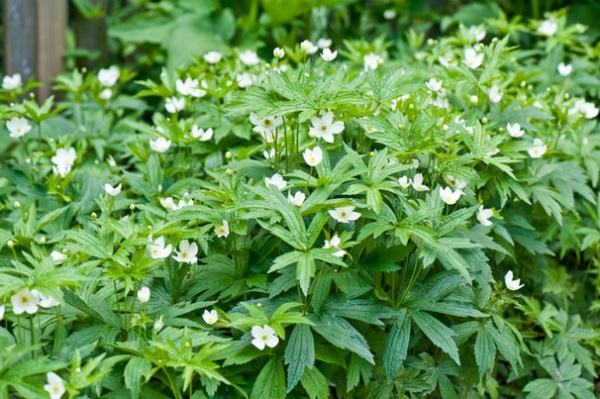
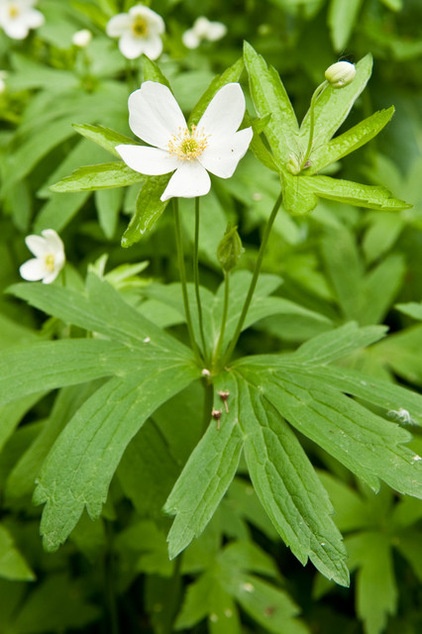
Botanical name: Anemone canadensis
Common names: Canada anemone, Canadian anemone
Origin: Canada anemone occurs in eastern and western North American wetland margins, from Montana eastward to Maine in the north, and southward to Colorado in the west and Virginia in the east; in Canada it occurs in all provinces as well as the Northwest Territories.
Where it will grow: Hardy to -45 degrees Fahrenheit (USDA zones 2b to 6b; find your zone)
Typical plant communities: Moist to mesic sites in full to partial sun; common along lakes, wetlands, creeks, and small rivers
Soil requirement: Wet to mesic, sandy to clay-loam soil
Light requirement: Sun to partial shade
Mature size: 8 to 30 inches tall and 12 inches wide
Benefits and tolerances: Tolerates wet soil; prefers sunny, open sites with rich soil
Seasonal interest: Large, bright white flowers open in late spring, typically in April or May, providing color along stream and lake edges; the geranium-like foliage remains dark green throughout the summer.
When to plant: Spring or fall; bare-root or potted plants are available from many native plant nurseries
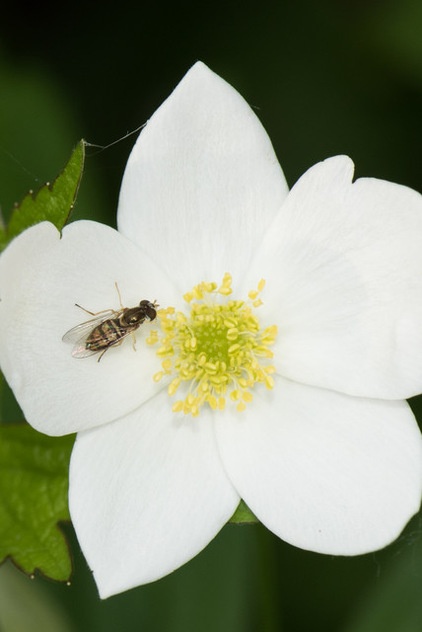
Distinguishing traits. The root is rhizomatous, and this plant can spread quickly in open, bare sites, especially in moist, rich soil. This plant, therefore, requires space and would not be suitable for a small planting, where it could potentially outcompete its neighbors.
How to use it. Canada anemone is an ideal native perennial for pond edges, roadside ditches, stream banks, retention basins or large areas that remain moist throughout the summer.
Shown: A syrphid fly feeding on the flower’s pollen
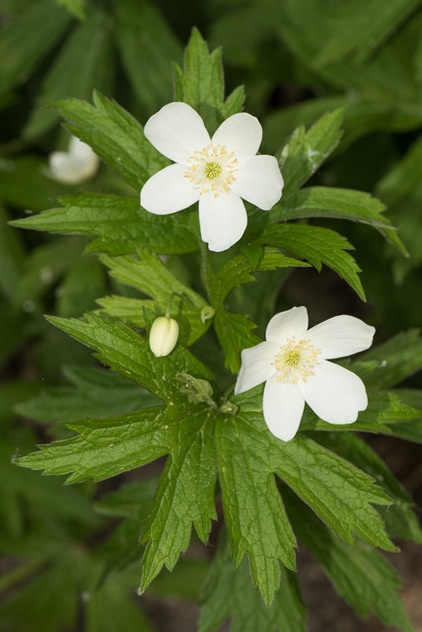
Planting notes. Canada anemone is easy to grow if planted in moist conditions in full to partial sun. Mature plants can be divided and replanted or thinned as needed. Growing it from seed requires patience; the seeds need two periods of cold, moist stratification, followed by warm stratification before germination occurs.
How to start plants from seed
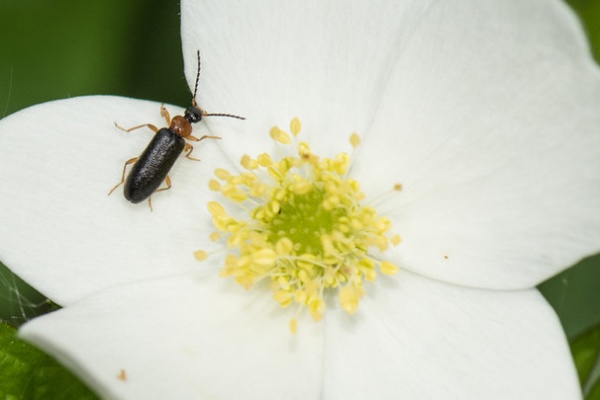
Shown: A fire-colored beetle on the flower
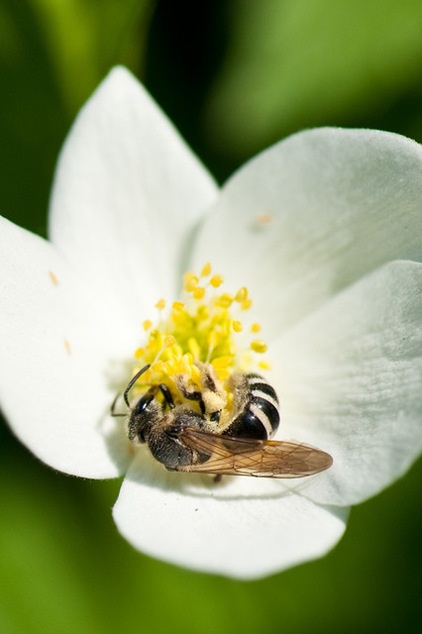
Pollinator notes. Canada anemone flowers are nectarless, so the insects who visit (bees, flies and beetles) are either pollen feeders or pollen collectors.
Mining bees (Andrena spp) are very common visitors to the flowers; other bees that visit include small, solitary bees, like sweat bees (Halictus spp), small sweat bees (Lasioglossum spp) and yellow-faced bees (Hylaeus spp).
Shown: A sweat bee (Halictus sp) circling around the flower’s anthers collecting pollen
More:
Browse plants native to other regions of the U.S.
See more ways to welcome beneficial insects into your garden
Related Articles Recommended












